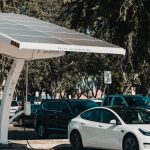Waymo’s rise in the autonomous vehicle landscape is drawing attention as the company recently reported that its fleet has traveled over 100 million fully driverless miles—a figure that underlines both the scale and operational momentum of robotaxi services in the U.S. As cities introduce new regulations and technological rivals continue to emerge, the expansion of Waymo’s operations signals a major shift in how urban mobility solutions are being delivered across multiple regions. Waymo’s decision to expand service areas and enter new markets comes at a pivotal moment, with consumer adoption and legislative changes shaping the next phase of autonomous vehicle services.
Over recent years, Waymo’s main competition, including Cruise, Zoox, and Nuro, has pursued their own milestones, sometimes facing regulatory setbacks or technical challenges. While Cruise paused major expansion efforts following high-profile incidents, Zoox and Nuro have recently reported increased deployment of their respective technologies, such as Nuro’s zero-occupant delivery vehicles. In parallel, Tesla’s pilot robotaxi operations in Austin have relied on human safety monitors, reflecting a gradual approach toward full autonomy. These developments illustrate the varied strategies and timelines within the sector, highlighting how Waymo’s latest achievements measure up against ongoing industry efforts.
Waymo Accelerates Autonomous Service and Mileage
Waymo, a subsidiary of Alphabet Inc., announced it has reached a total of 100 million miles driven autonomously with no human at the wheel, doubling its mileage in just six months. The company currently provides more than 250,000 rides weekly and has surpassed 10 million fully autonomous trips overall. Its operations span Phoenix, San Francisco, Los Angeles, and Austin, while a rollout in new cities such as Atlanta and Miami has been outlined for the coming years.
How Does Competition Stack Up in Austin?
In Austin, Waymo has expanded its coverage from 37 square miles to 90 square miles, and users can access rides through the Uber app. Tesla entered this market in June with a robotaxi offering that employs “Full Self-Driving” software in Model Y vehicles, though these still include safety monitors in the passenger seat. Other companies, like Zoox and Nuro, are exploring markets and technologies at different scales and paces, but Waymo’s mileage and operational scope position it as a leading provider among current contenders.
Are Laws Keeping Up With Robotaxi Deployment?
Steps are being taken to update regulations so autonomous vehicles have clearer paths to public deployment. In Washington, D.C., legislation proposed by councilmember Kenyan McDuffie would remove the requirement for a human operator to be present in AVs. Such moves could make it possible for companies like Waymo to operate in cities with different weather and infrastructure challenges, with D.C. soon to become the first snow-prone region in Waymo’s network.
“Reaching 100 million fully autonomous miles represents years of methodical progress now accelerating into rapid, responsible scaling,” stated Saswat Panigrahi, Waymo’s chief product officer.
As the autonomous vehicle sector matures, both legislative reform and technical adaptation will be crucial for broadening the adoption of driverless technologies. Competition remains ongoing from both legacy and new entrants, who are at various stages of development or market entry. Major distinctions also arise based on whether services are offered without onboard safety drivers, as seen with Waymo, or with human monitors, as per Tesla’s pilot in Austin.
The rapid accumulation of autonomous miles places Waymo in a strong position, but sustained progress will depend on consumer trust, local government cooperation, and continuous performance improvements. Crucial issues for urban mobility include infrastructure readiness, public adaptation, and operational resilience in diverse climates. For readers considering how these advancements will affect transportation, it is important to monitor changes in local legislation, industry partnerships, and community engagement, as these will dictate how quickly and equitably driverless vehicle services expand in different areas.










